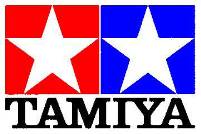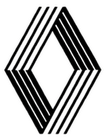Renault have a substantial history of innovation in motor sport, trouble is most people don’t go back as far as the earliest motor races, so the Renault brothers many wins were long forgotten when Renault burst back onto the F1 scene in the mid 1970s. The establishment scoffed at the turbo engine just as they had laughed at the first shaft drive transmissions, they were wrong in 1902 and they were wrong again in the “modern” era.
The Renault RE30 was designed by Michel Tétu and Gérard Larrousse for the 1981 season. It was made from Aluminium honeycomb structures but had the new, and increasingly common place, carbon fibre material woven into some parts of its construction.
Renault were making more use of the under-car aerodynamics despite the fact that it had to have fixed side skirts, moveable ones having been banned by the FIA. Their engine was further developed along with it’s KKK twin turbochargers was kicking out around 540bhp in 1981.
Alain Prost joined René Arnoux in the all French dream team and much was expected of the ‘81 season. The promise dwindled quickly as unreliability cost the team time and time again, and as well as frustrating it slowed the pace of development too. Prost did pick up wins, on home soil in France as well as at Zandvoort and Monza.
For 1982, the car was improved in several areas. The nose was redesigned, a new rear wing was developed and the body in front of the rear wheels sprouted new kick-ups. Once again more power was squeezed from the 1.5Ltr V6 motor which now gave around 590bhp. This car also flattered to deceive with Prost taking wins in Brazil and South Africa, then spending the rest of the season dodging mechanical unreliability. Arnoux only finished four races all year but managed to convert two of these finishes into wins, again winning the home race in France, and his other win was in Italy.
The problems were all the more frustrating as the car was so strong in qualifying. Renault started on pole for 10 of the 16 races, a 50-50 split between the two drivers. The lack of reliability again thwarted technical development of the car allowing the other teams to find ways of circumventing Renaults turbo power advantage. Prost amassed enough points to take fourth in the divers championship while Renault scrambled to third in the constructors' championship


1/20th scale kit.
Built by Ian.
By the time this kit, #20018, was released in 1984 Tamiya were well into their stride in producing accurate static display models, leaving behind the earlier motorized kits. The attention to detail just kept getting better, mould making technology was expanding rapidly and Tamiya were a pioneering force worldwide.
Ian, on the other hand, was still feeling his feet in F1 car model making. This is only the fourth car Ian built but extra wiring and detail, prompted by articles in many model making magazines, is evident. The plug wires are in the kit but everything else was done with household items and spare decals. Ian was hampered by a lack of references at but for an inexperienced F1 car model maker in the early 1990s Ian was happy with the result. However, we can see here the effect of not dealing with ejector pin marks (and/or sink marks), it doesn't matter how much detail you add, if you don’t do the basics your model will not look realistic.
All the painting is done by brush with Humbrol enamels. Some of the body has been brush painted but Ian used the kit plastic for the yellow. You can see that this does not work very well and despite later covering the body with a Humbrol "clearcote" it has never looked as good as a properly painted body would have. The temptation to strip and restore this model has been great but that robs us of an opportunity to show how we all have to learn and develop our skills. In due course another of these will be built using more modern techniques.
RETURN TO -